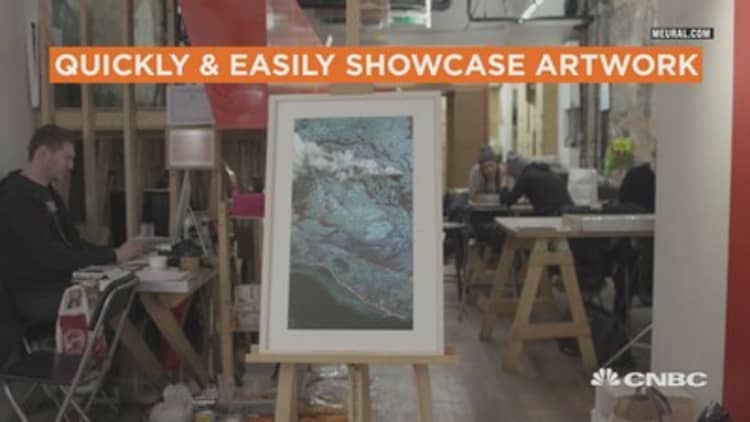Meural looks like a regular wall frame, until you move your hand in front of it in a swiping motion. Then the art display changes from a Monet to a Picasso to any of the other 1,000 choices you can load onto the frame. Connect Meural to Wi-Fi and you can pick from 19,000 more options.
In the age of apps and online platforms, starting a hardware start-up like Meural can seem extremely difficult. How did the company do it?
Meural co-founder and CEO Vladimir Vukicevic will be the first one to tell you it wasn't easy.
"Hardware to me is 10 times as complex as software or web-based businesses, because all of a sudden we have to think about shipping and logistics, a warehouse, return policies, manufacturing and supply-chain management," Vukicevic said.
To date, Vukicevic and Meural co-founder and COO Jerry Hu have raised $3.2 million in venture capital.
Each Meural sells for $495. The start-up's revenue hit more than $200,000 in 2015, when the company had its beta launch.
Vukicevic shared his top tips with CNBC for getting an invention off the ground:
1. Make a prototype early on.
"Going into investor meetings with something tangible is so, so, so much more effective than just an idea," Vukicevic said.
Vukicevic and Hu spent six months developing a prototype, with funding coming mostly from family members.
2. Assemble the right team
Vukicevic's passion is art, and Hu's is technology. This difference was vital in helping them create a product that is both artistic and technological, Vukicevic said.
"The team has to be more diverse and complex than a traditional start-up. We needed an electrical engineer, mechanical designer, traditional engineers and designers," he said.
3. Find an incubator that caters to hardware start-ups
"On the investor side, it's important to have investors or stakeholders that understand hardware," he said. "They know that the development cycle for hardware is not months or weeks like it is for software, it's quarters or even years in some cases."
Meural received seed funding from BOLT, a venture capital firm in Boston that invests exclusively in hardware companies.
"They were a great fit for us," he said.
4. Know every detail, but be open to change
Building the digital frame was complicated, Vukicevic said. Meural gets its electronics from China, its display from South Korea and the wood for the frame from Pennsylvania.
Then there's the art. The team licensed all 20,000 and counting pieces of art in Meural's library from different stakeholders, Vukicevic said.
"You really have to have more flexibility and more transparency [when creating a physical product]," Vukicevic said. "Knowing that you're getting yourself into quite a difficult challenge is important."





